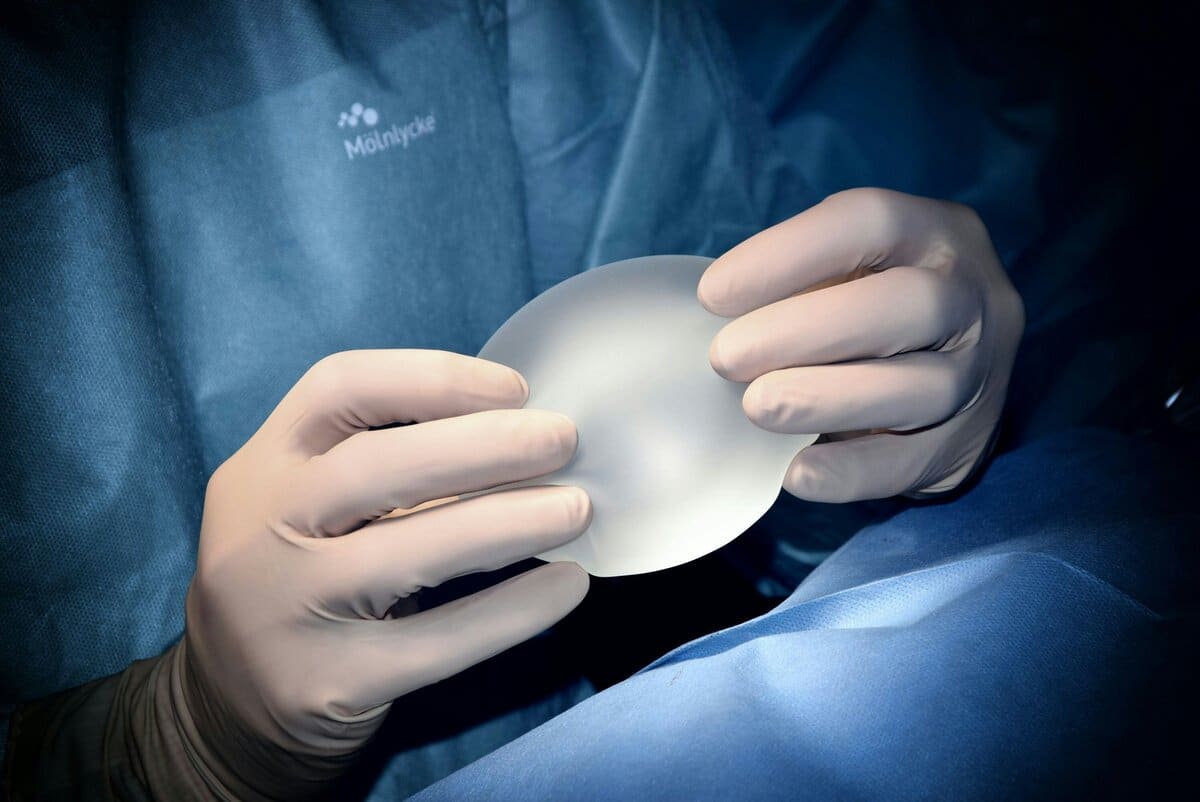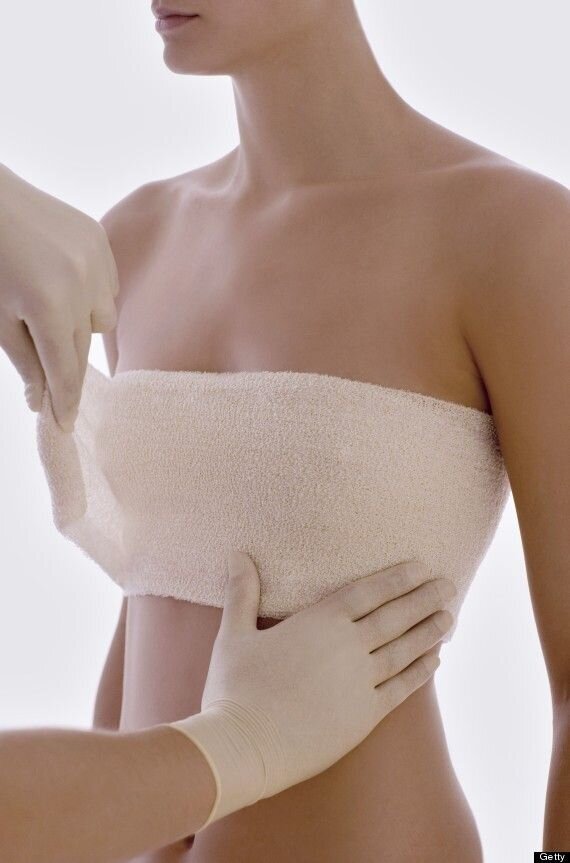Overview & Why Choose Dr. Chang
Breast lift or mastopexy aims to lift both the breast and the nipple-areolar complex onto the chest wall and achieve a youthful, rejuvenated contour and symmetry of the breasts. This surgery is an excellent option for patients with mildly deflated breasts that have sagged (become ptotic) due to aging, pregnancy, and/or weight fluctuations.
The keys to an excellent outcome are careful and critical pre-operative analysis, thorough surgical planning, and meticulous technical execution. Dr. Chang takes incredible care to deliver on each of these for every patient.
Dr. Chang critically analyses each patient’s breast size, skin quality, nipple-areolar complex size and position, asymmetries in breast size or position or nipple-areolar complex position, location of the breast footprint and inframammary fold, and the underlying anatomy of the muscles, ribs, and sternum. Most of these factors that impact breast aesthetics are able to be improved surgically, but some are not. Dr. Chang will listen to your goals and ideal breast aesthetic to form a plan with you that can deliver a nice result based on your anatomy and in aesthetic harmony with the rest of your body. Sometimes patients come in thinking they want a mastopexy, but are better candidates for a breast reduction or a breast augmentation-mastopexy with implants or fat grafting. Dr. Chang is expertly trained in how to adjust the surgical planning to achieve the desired results and account for pre-operative asymmetries and differences in anatomy. Dr. Chang has vast experience in the multitude of different techniques that can be applied in different situations for different patients. His surgical precision helps maintain blood flow and sensation to the breast and nipple-areolar complex, while minimizing complications such as poor wound-healing, poor scarring, and asymmetries.
Who Is a Candidate?
- Sagging Breasts – Patients with breasts that have lost their volume and skin elasticity and have fallen down on the chest wall, resulting in a droopy/sagging appearance, will benefit from having their breasts lifted and rejuvenated to be centered on their chests. Patients with excessive volume loss and interested in a larger breast size are better candidates for a breast augmentation/mastopexy.
- Downturned and/or Asymmetric Nipple-Areola Complexes – Patients with nipple-areola complexes that are pointing downward or located in asymmetric positions will benefit from having the nipple-areola complexes lifted and centered on your breasts.
- Healthy Patients – Healthy, non-smoking patients without major medical conditions that would make surgery or general anesthesia unsafe are candidates for this surgery. Patients should be at their goal-weight and have it stable for at least 6 months. Conditions that pre-dispose to increased complications such as diabetes, vascular disease, autoimmune conditions, immunodeficiencies, etc. are still candidates for surgery but require additional pre-operative counseling and optimization.
- Realistic Expectations – Dr. Chang views surgery as a partnership between the patient and him. It is important trust and confidence go both ways. Together, we will discuss your goals and if we can reasonably achieve those goals based on your anatomy.

Pre-Operative
- Medical Evaluation – Dr. Chang will review your medical conditions, medications, prior surgeries, and personal and family history of breast diseases, masses, and cancers. Some patients may be referred to their primary care doctor or a specialist to ensure you are medically optimized for a safe surgery under general anesthesia and post-operative recovery.
- Breast Examination – Dr. Chang will perform a physical examination of your breasts. This will include measurements of the size, location, and symmetry of the breasts and nippleareolar complexes. Dr. Chang will assess the skin quality, the weight/volume of excess breast tissue relative to your desired size, and the positions of the nipple areolar complexes to help determine the best surgical approach. Dr. Chang will palpate for any noticeable breast masses.
- Clinical Photographs – Clinical photographs from multiple views will be taken of your breasts. These photos are used to help plan for your individualized surgery and compare before and after surgery. No photographs will be published online without your written consent.
- Imaging Studies – Based on your age, genetic risk, and personal and family history of breast conditions or tumors, you may be recommended for a mammogram, ultrasound, CT, or MRI study. If a lesion is identified, you may be recommended for a biopsy and a consultation with a breast oncologic surgeon prior to proceeding with surgery.
Technique
- Wise-Pattern / Anchor / Inverted T – This incision pattern is the most common for mastopexies as it allows the most amount of control in the final contour of the breasts. The incisions are around the around the new position of the areola, the breast fold (inframammary fold), and a small vertical incision connecting the bottom of the areola to the breast fold. The incision around the areola is blended in the natural transition between the more-pigmented skin of the areola and the less-pigmented breast skin. The incision along the inframammary fold is hidden underneath the breast; if there is a lot of excess skin on the side of your chest, then the incision will continue to the side of your chest but be hidden within your bra line.
- Circumvertical / Lollipop – This incision pattern includes an incision around the areola and a vertical incision from the bottom of the areola to the breast fold, without an incision along the breast fold. This technique limits the scar burden but offers less control of excess skin and is only an option for young patients with very good skin quality and minimal skin excess. A hybrid approach combines this technique with a small, limited incision in the breast fold.
- Circumareolar / Periareolar / Donut / Crescent – This incision pattern results in a scar around the entire areola or a portion of it. This technique is rarely used for primary mastopexies and instead better for revision cases to treat minor nipple-areola complex asymmetry.
- Breast-Shaping Sutures & Mesh – Regardless of the incision choice, Dr. Chang uses specialized suturing techniques to aesthetically shape the breast. In certain circumstances, Dr. Chang may recommend the use or absorbable mesh to help reinforce the position and shape of the breasts, like an internal bra.
- Ancillary Procedures – Dr. Chang will also assess your overall body contour, primarily that of the axillae, side chest wall, back, and abdomen. Sometimes additional surgeries are recommended to maintain aesthetic harmony between the breasts themselves and your regional anatomy. This may include addressing excess fat or breast tissue of the axillary or pre-axillary region, excess skin or fat of the side chest wall and back, and excess skin or fat of the abdomen. Sometimes rejuvenating the appearance of the breasts alone draws your attention to other parts of your body. It is completely your decision on whether or not to proceed with ancillary surgeries, but Dr. Chang wants his patients appropriately informed on what to expect afterwards. In almost all cases, if you are bothered by one of those problems after breast reduction, Dr. Chang is able to address that in a separate surgery.

Post-Operative
- Dressings and Incision Care – Your incisions will be dressed with surgical bandage strips and/or surgical skin glue. You will be wearing a comfortable surgical bra stuffed with gauze pads. The bra should be snug but not overly tight. You should try to wear the surgical bra as much as possible but may remove to shower and to wash the bra. You may or may not have surgical drains depending on your medical conditions, amount of breast tissue resect, and Dr. Chang’s clinical judgment. They will be removed at your first post-operative visit. You may shower the day after surgery but cannot bathe or swim until instructed to do so.
- Pain Management & Medications – Local anesthetic (numbing medication) will be injected at your surgical sites to minimize your immediate post-operative pain. You should take acetaminophen and an NSAID around-the-clock, according to instruction, for the first 72 hours and then as-needed thereafter. You can purchase these over-thecounter. You will be given a small number of low-dose narcotic pain medications for breakthrough pain only for the first 72 hours.
- Recovery Period – You are expected to go home the same day of surgery and should be ambulating without restriction the same day of surgery. Depending on your occupation, you may return to work as early as the following week. You may resume light cardio exercises at 2 weeks after surgery. You should not lift anything heavier than 5 pounds or extend your arms extensively over your head for the first 2-4 weeks after surgery. You may resume all physical activities at 4-6 weeks after surgery. You should expect some drainage from the incisions and mild bruising around the incisions. You will be swollen, and it can take up to 3-6 months for the swelling to reside. Your incisions will take 2-4 weeks to completely heal, but the final scar will take 6-12 months to mature. Scar care will be discussed at your 1 month post-operative appointment.
- Follow-Up Visits – If you have any urgent concerns, you may call the office at any time. Otherwise, expect follow-up visits at 1 week, 1 month, 3 months, 6 months, and 1 year.
Complications
- Unmet Expectations – Despite thorough pre-operative planning and discussions, you still may not be fully happy with your aesthetic results.
- Persistent Symptoms – In rare cases, you may have persistent back/neck/shoulder pain or rashes in your breast fold.
- Asymmetry – No one’s breasts are perfectly symmetric. While the goal is near-perfect symmetry, there may be some asymmetries in breast size or position, nipple-areola complex size or position, and scars.
- Poor Scarring – Everyone scars differently. The final scar takes 6-12 months to mature. In rare cases, hypertrophic scars or keloids may form and may require secondary revision.
- Wound Healing Issues – There may be small areas where the incisions do not fully heal. In these cases, the wounds will be allowed to heal on their own with dressing changes. Severe cases may require a secondary revision procedure.
- Infection – Infections are managed with antibiotics. In severe cases, you may need an additional procedure.
- Bleeding – Significant bleeding after surgery may require an urgent return to the operating room. Smaller collections of blood may be treated conservatively or managed with a small procedure in the office or the operative room.
- Seroma – Fluid collections may develop in the breast. Small ones will be absorbed by the body, but larger ones will need to be aspirated in the clinic.
- Changes in Sensation – Temporary changes in breast and nipple-areola complex sensation are expected. Permanent changes may also occur, both decreased and increased sensation.
- Altered Ability to Breastfeed – All research suggests that patients, on average, are able to breastfeed to the same ability as people who have not undergone surgery. That being said, some patients may have altered ability to breastfeed.
- Partial or Complete Nipple-Areolar Complex Loss – If the blood supply to the nipple-areolar complex is compromised, it may result in partial or complete nipple-areolar complex loss. The risk is higher in patients with very large and/or ptotic breasts who require a large reduction and/or significant upward movement of the nipple-areolar complex. If decreased viability is noticed in the operating room, the nipple-areolar complex may be removed and then sutured back on to survive as a graft.